Back in 2016, Charlie Tait explained the work made by Weta Digital on Deadpool. He went on to work on many shows such as Guardians of the Galaxy Vol. 2, Avengers: Infinity War, Alita: Battle Angel and Game of Thrones.
How was the collaboration with Director Matthew Vaughn and Production VFX Supervisor Angus Bickerton?
I enjoyed the previous Kingsman films because of their particular Englishness as much as anything, so being a Brit 20 years in New Zealand, the idea of going back to the UK to work on one of these films was exciting. Moreover, I had worked with Angus on a few shows in the 1990s (Lost in Space, Animal Farm, Band of Brothers) and hadn’t seen him since. Angus and Matthew already had a very strong working relationship, and it was an honour for me to be able to join in and support Angus working on set as an additional VFX Supervisor.
What were their expectations and approach to the visual effects?
Everything had been very tightly previsualised before shooting, so we spoke about the previz sequences before I even left New Zealand. Weta worked on all of the WW1 battlefield scenes. I looked over the set plans with Angus—it was a massive space, with a large berm built around two sides to block the view of the landscape beyond. Angus and I agreed that erecting a large bluescreen around the set would be impractical, so while cranes and cables from the suspended cable camera rig and other equipment would often be visible and require painting out, it was the preferred option over making every shot a bluescreen comp.
What are the sequences made by Weta?
We did all the WW1 scenes, from the soldiers resting behind the lines (crowd replication), to their march to the front (inspired by WW1 photographs of the Menin Road outside Ypres), their night patrol into No Man’s Land and the ensuing hand to hand combat, and then Conrad’s run back to the British lines.
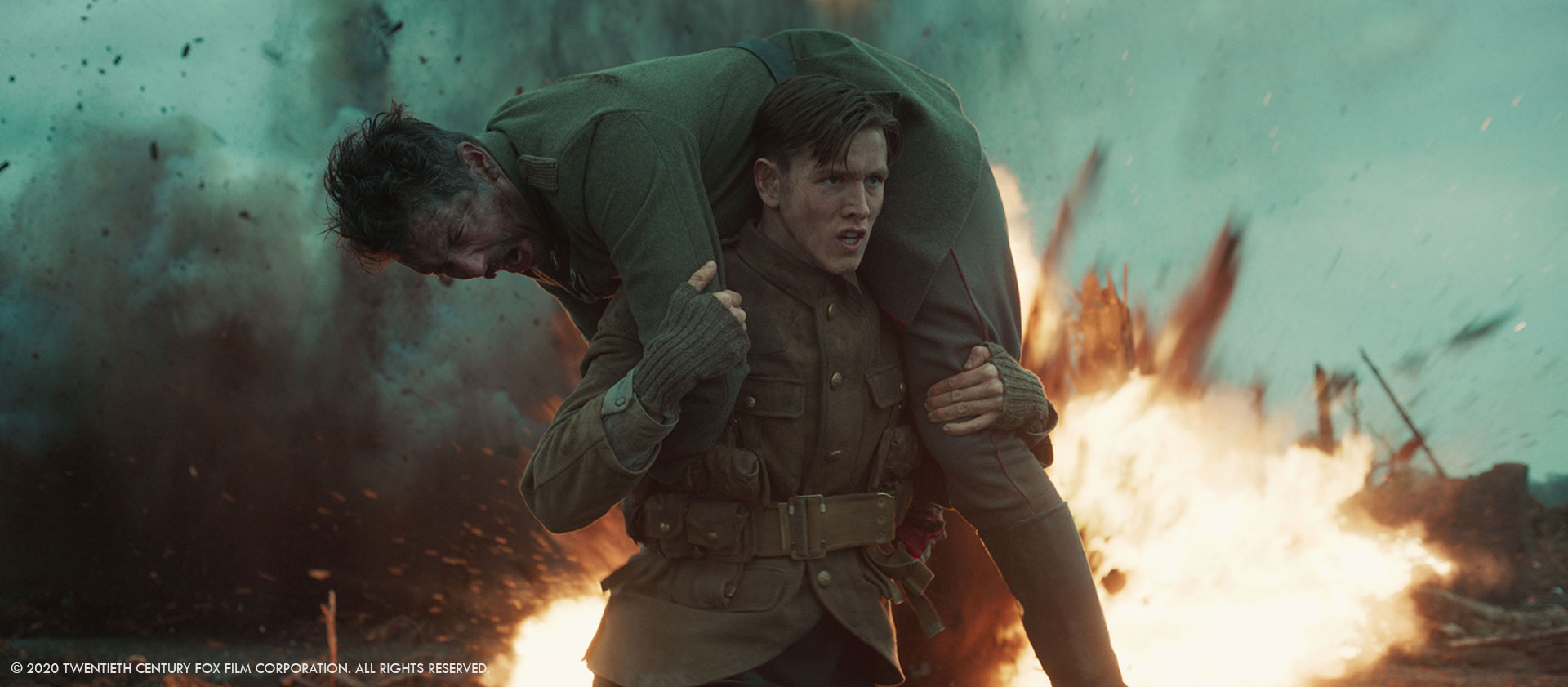
What was your approach about the World War 1 battle scenes?
We did a lot of visual research. Many of the details in our shots are inspired by things we saw in some of the most iconic photographs from WW1. I referred to these often – there was so much material to look at that there was really no need to be vague or inaccurate with the details.
Can you elaborate about the time-lapse shot?
The time-lapse shot was part of a montage that started with the young soldiers going “over the top”. They run out of their trench into a hail of machine gun fire on grassy terrain. For Matthew, the idea was that this was very early in the war and the terrain had not been chewed up into the hellish No Man’s Land that we imagine when we think of trench warfare. After the soldiers collapse, we pan over revealing a wider field of bodies along the trench line. We carefully composed the positions of the bodies to align with features in the landscape that we dissolve into, making for quite a stylized transition.
The matte painting of the Belgian countryside was done both pristine and green, and destroyed by artillery. We created a trench map to cover the landscape and revealed this through an animation as logically as we could, considering where trenches might begin and how the network would grow. We rendered hundreds of skies (along with shadows cast by the clouds onto the terrain) and animated the first and last skies to speed up and slow down, to ease us in and out of the frantic time-lapse. Eventually as the camera pulls back, we see the foreground transforming too. This was entirely CG using Houdini to animate the construction of trenches, the placement of sandbags and the randomisation of barbed wire entanglements caused by artillery fire. The transformation of the whole landscape, caused mainly by artillery, was driven by a map generated by particles hitting the terrain and accumulating until it was eventually covered. The final shot was 1473 frames long and was in progress for about 10 months.
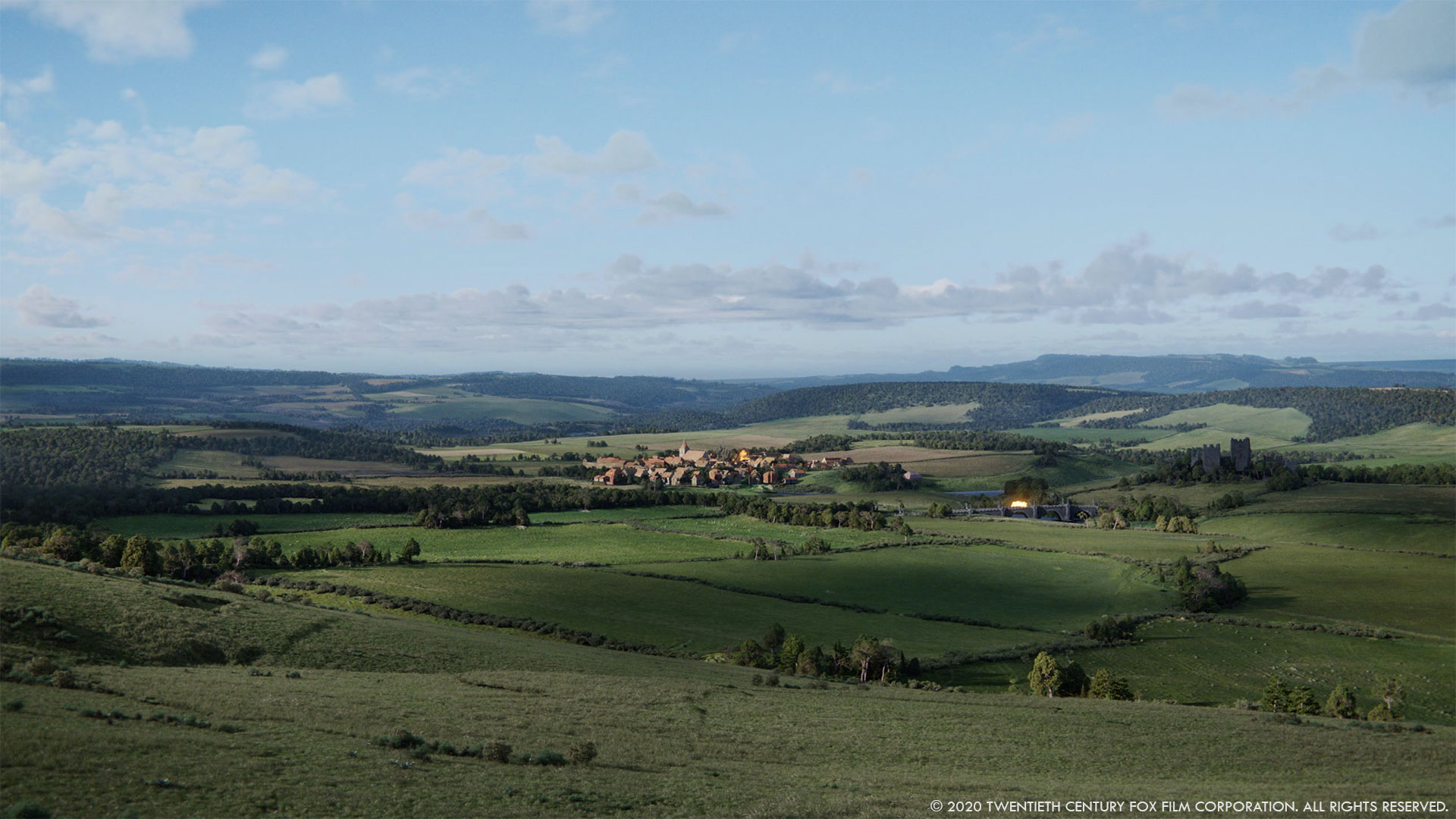
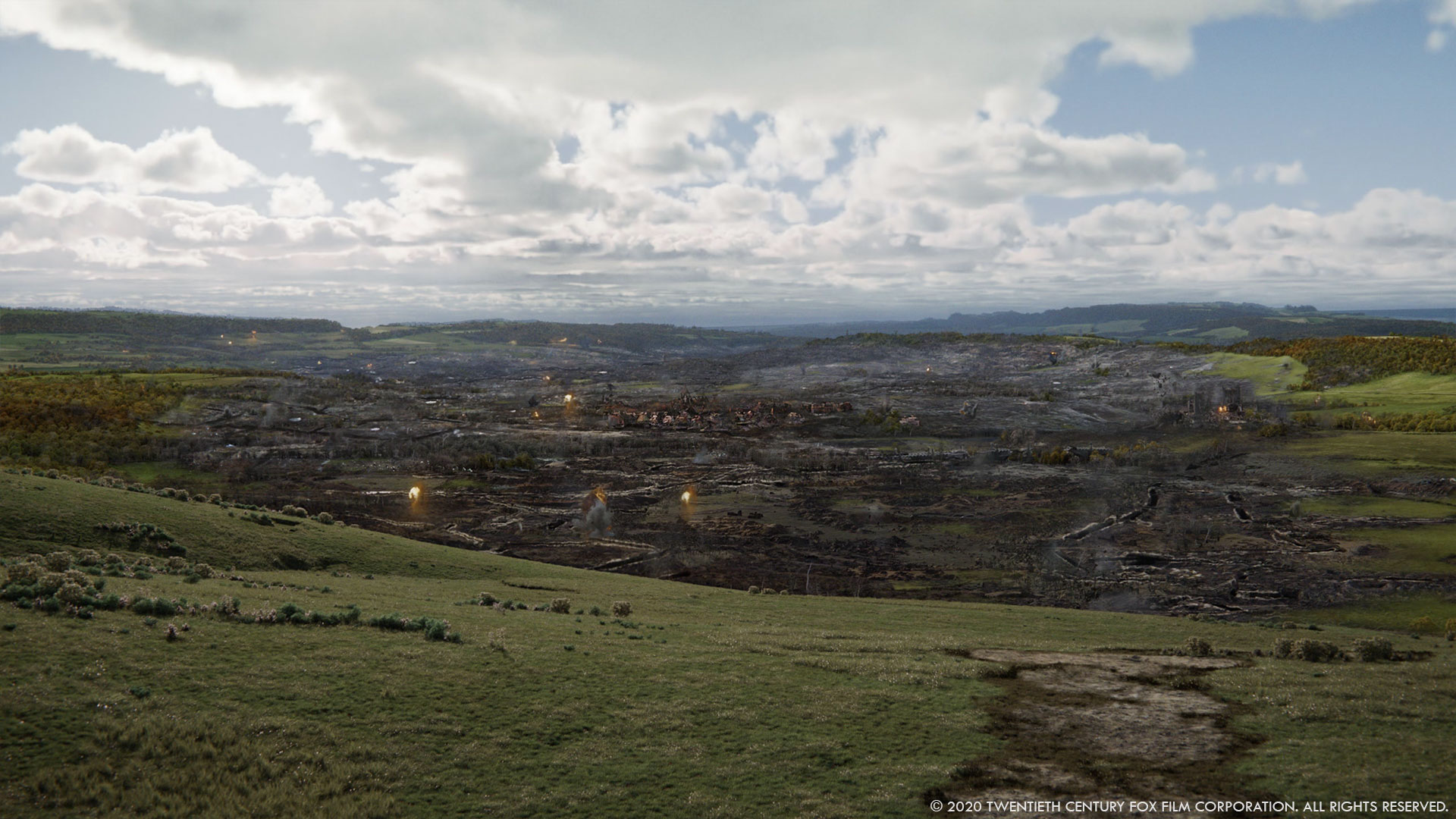
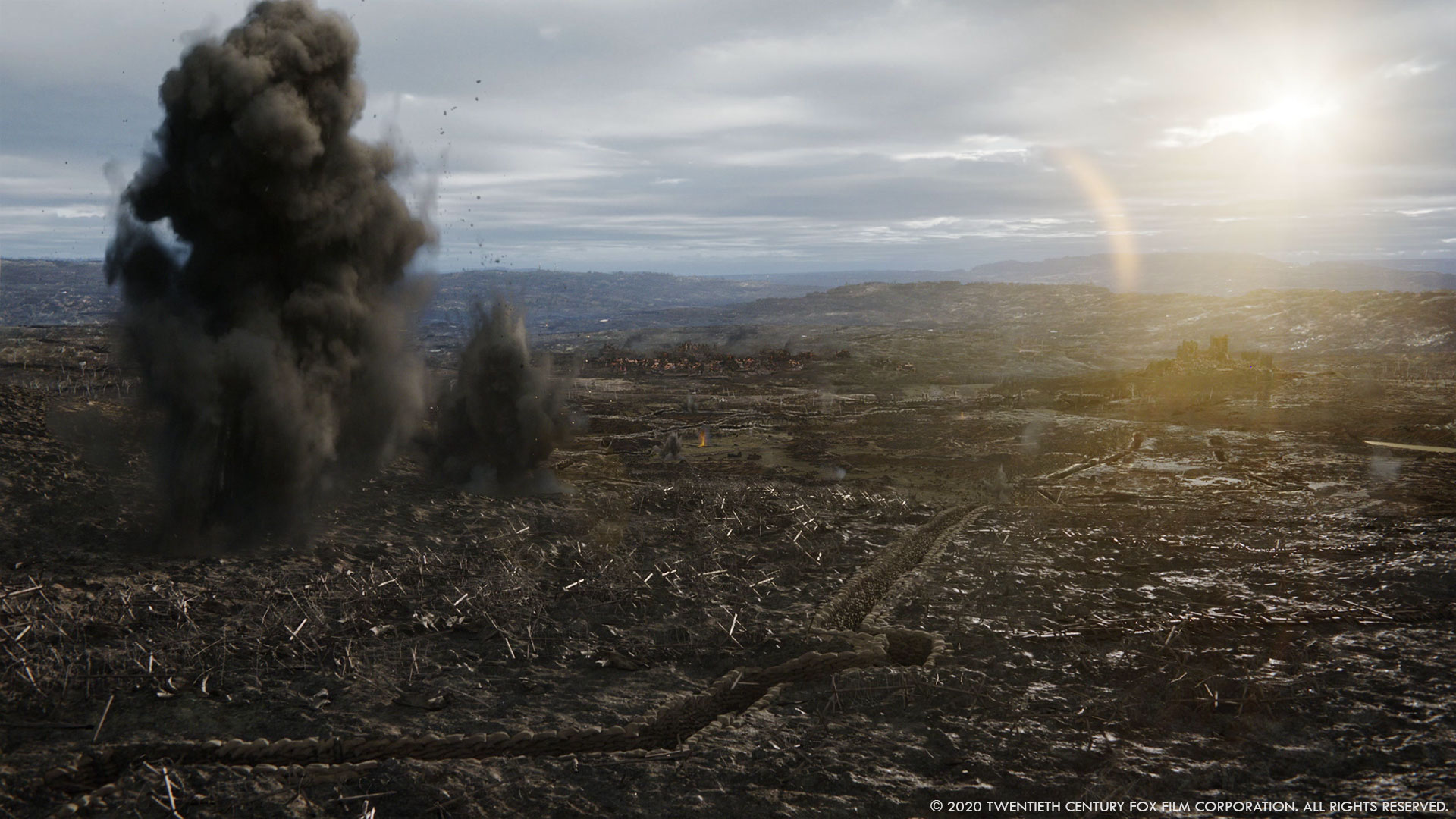
How did you create the vast environment of the No Man’s Land?
The No Man’s Land set was on the edge of an airfield at White Waltham. Several hundred meters long, it was dressed with exploded trees, chewed up by digger-made craters, and scattered with the debris of war such as barbed wire, sandbags and smashed up timber. The set looked the part. We had to extend it off out towards the horizon and sometimes needed to replace it all together.
To best prepare us for this, I walked the set with a photographer and took hundreds of shots of every bit of set dressing we could find. I also booked the production’s drone team (Flying Pictures) to come to set four hours early one day to fly multiple passes with a DSLR on the heavy lift drone for the purpose of photogrammetry. Using these photographs we were able to make an extremely accurate model of the set, which became the absolute lynchpin of all our visual effects shots.
The model was so accurate that once we had it cleaned up, textured, and shaded, we could align it to the camera for any shot and render the exact same view. It can’t be overstated how useful this was for removing cranes, vehicles, and crew etc., which were often visible because the set was so large. We also used instances of the same model that we adjusted and distorted to create the layers of surrounding landscape required to extend the set.
Once this terrain model was complete, we dressed it with puddles, debris (a lot of sticks, stones, and smashed timber pieces) and barbed wire (both loose and on timber framed “entanglements”). Many of these items were pulled from Weta’s asset library, but specific details were modelled from the reference photographs I brought back.
How did you enhance the gore aspect of the WW1 scenes?
For the silent knife fight scene at night, we used a lot of filmed blood elements from our library. Every shot involving a stabbing or slashing had 2D blood added. For the finale of this scene, where the captain and a German soldier are mown down by machine gunners from both sides of the lines, I made targets of cardboard, play dough and blood bags wrapped in fabric (to represent the outer clothing). We shot these with a shotgun, trying different loads to get the right effect, and filmed at high speed with a Red Weapon in font of greenscreen. All of these elements were used in the final composite for that shot.
Can you elaborate about your work on the intense hand-to-hand fight?
Our work on this scene began with extending the set and removing unwanted equipment from the backgrounds. As work progressed though, Matthew felt that it just didn’t seem plausible that the two squads would reach each other unseen. We started adding a bit of mist, which got thicker and thicker until it was a dense fog – at that point we had to roto every character for the duration of each shot. Our terrain model became useful again here though; we positioned it and rendered a depth matte to help us lay in the fog. Finding the level of grey in the depth matte where the soldiers feet contacted the ground allowed us to embed them in the fog convincingly.
How did you create the various explosions?
The explosions were mostly practical, however the cable camera cranes were almost always traveling through the background of the frame behind the explosions, making them extremely hard to paint out. Our FX team made simulations to recreate the explosions, tuning them to be as accurate as possible and exactly where they needed to be, to restore the details that were lost when the cranes were removed. The live action explosions were retained as much as they could be, with the CG ones grafted on to hide only the areas lost in the clean-up work.
What is your favorite shot or sequence?
Conrad’s Run, where he is carrying the wounded soldier on his shoulders and running through gunfire and explosions. This is a perfect example of a solid plan with second unit director—the late Brad Allan— combined with shooting to the previz very accurately, remarkable stunt work and meticulously rehearsed pyrotechnics, invisible CG (explosions and set extension) and a stitch between two takes that nobody would ever know is there.
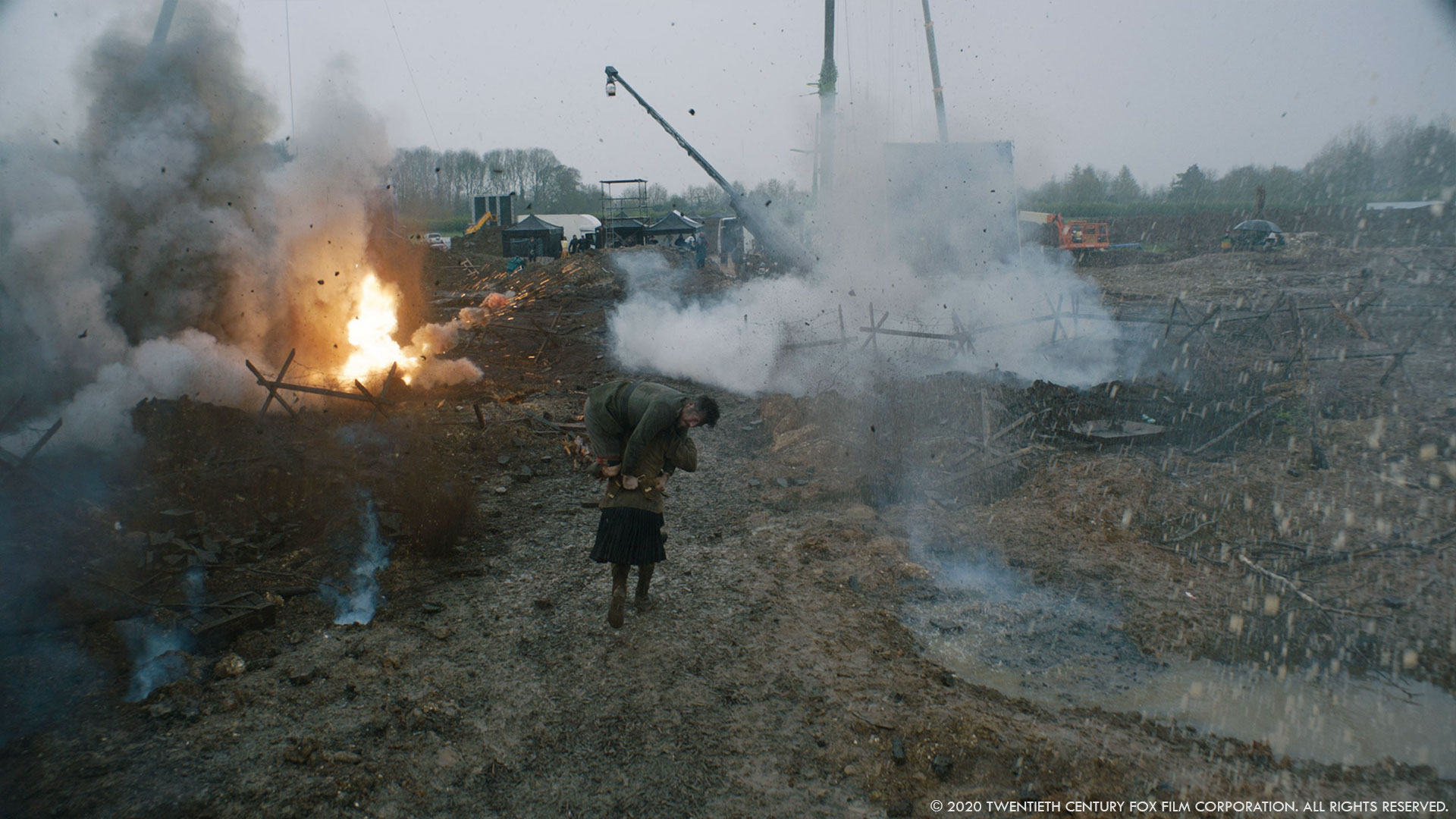
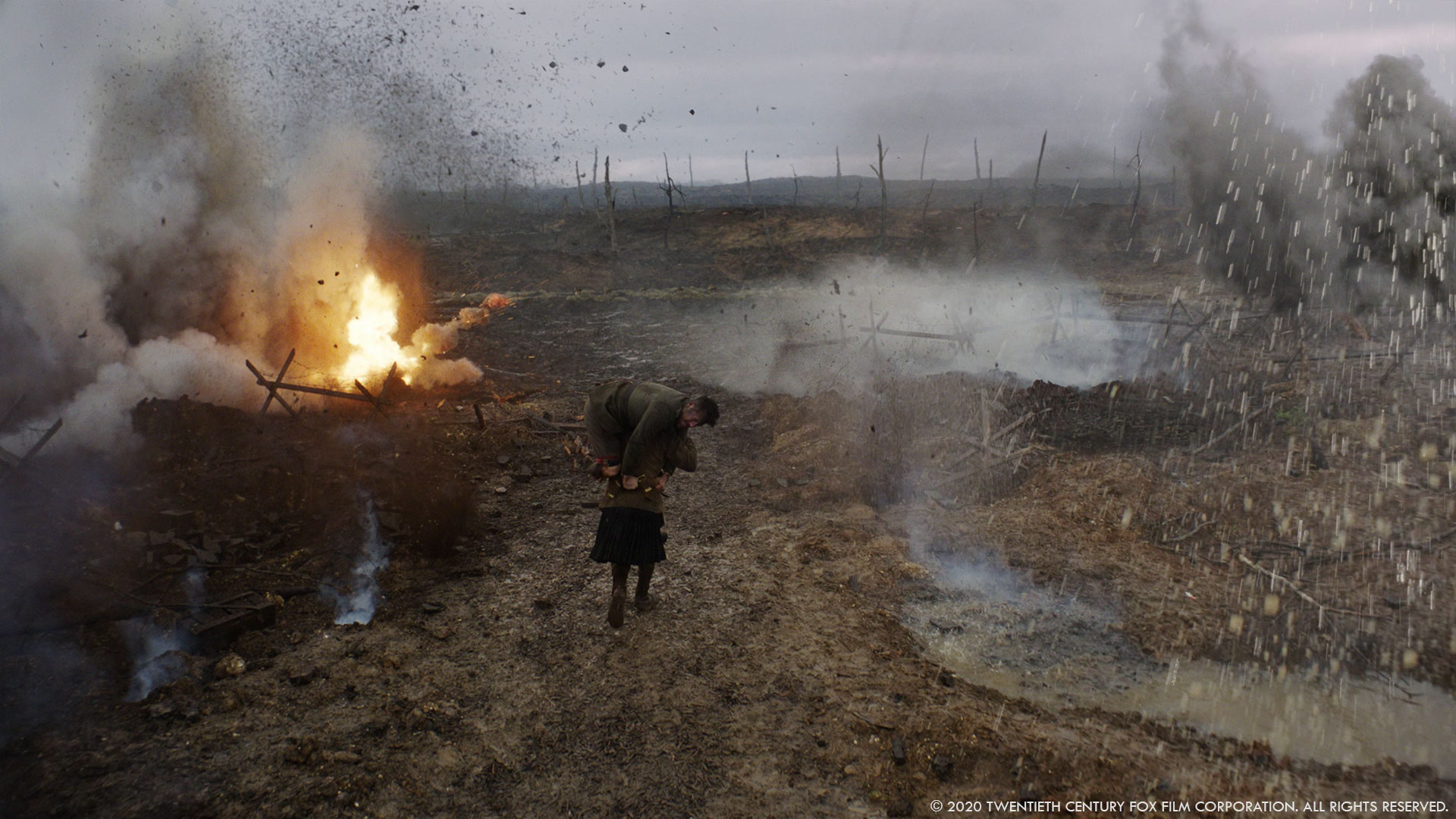
What is your best memory on this show?
Working both on set and in post with Angus Bickerton was a rare treat. He is the definition of a gentleman, always gracious about all of our efforts and a true collaborator who would sympathetically course-correct us when we were struggling. Working on a WW1 set with hundreds of explosions and gunfire was, for me personally, also fantastic and I felt very lucky to be able to be a part of it.
How long did you work on this show?
It was about a year from start to finish, including the shoot. We were all sorry when it was over, and
I know the whole crew would do it all over again given the chance.
What is the VFX shots count?
195 for Weta.
What was the size of your team?
179 people worked on the show at Weta.
What is your next project?
Since delivering The King’s Man I have finished work on The Falcon and the Winter Soldier, Peacemaker, and No Exit, a feature film directed by Damien Power. The next project is still under wraps, I’m afraid.
A big thanks for your time.
WANT TO KNOW MORE?
Weta Digital: Dedicated page about The King’s Man on Weta Digital website.
© Vincent Frei – The Art of VFX – 2022






